Feature: Jordan safeguards millions of migratory birds journeying along vital flyway
Source: Xinhua
Editor: huaxia
2025-10-23 04:43:30
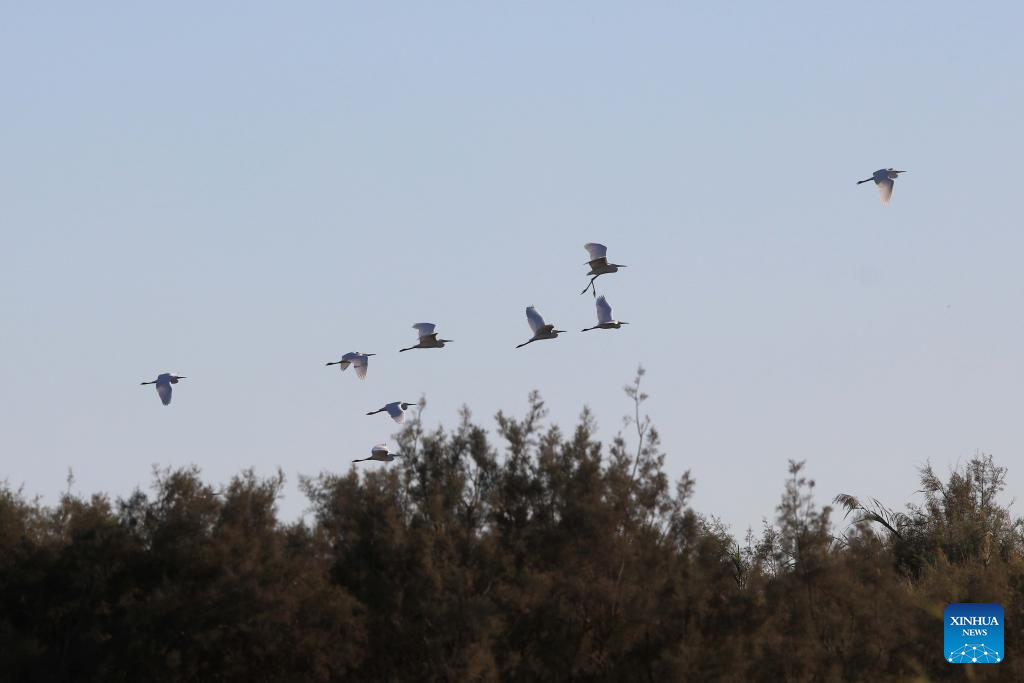
Birds fly over the Azraq Wetland Reserve in Azraq, Jordan on Oct. 13, 2025. Every year, millions of birds trace ancient aerial highways connecting Europe, Asia, and Africa. Jordan, located on one of these key bottlenecks, plays a crucial role in their twice-yearly migration. (Photo by Mohammad Abu Ghosh/Xinhua)
AMMAN, Oct. 22 (Xinhua) -- Every year, millions of birds trace ancient aerial highways connecting Europe, Asia, and Africa. Jordan, located on one of these key bottlenecks, plays a crucial role in their twice-yearly migration.
"The migration of birds is a natural phenomenon ever since the creation of the universe," said Firas Rahahleh, director of the Aqaba Bird Observatory and specialist in climate change at the Royal Society for the Conservation of Nature (RSCN).
Birds leave northern breeding grounds in autumn when snow and cold make feeding impossible, and return north in spring when temperatures moderate. These journeys follow established corridors rather than random paths. One of the main arteries is the Rift Valley-Red Sea flyway, a narrow migratory artery linking Eurasia and Africa.
Situated on this flyway, the world's second most important migratory route, Jordan witnesses the passage of millions of birds each year, Rahahleh said.
At the heart of this natural spectacle lies the man-made wetland of the Aqaba Bird Observatory, created from treated wastewater and managed as a reserve through collaboration between the RSCN and the Aqaba Special Economic Zone Authority (ASEZA).
"The treated water created a permanent wetland and the only forest in the Aqaba region," Rahahleh said. "It became an ideal resting place for migratory birds, safe, diverse and rich in food sources." Its proximity to Africa and mild winter climate mean some species even overwinter there.
"A total of 271 bird species have been recorded at Aqaba Bird Observatory, representing over 61 percent of the species recorded in the kingdom as a whole," Rahahleh said.
Spring and autumn are the busiest months for both birds and visitors. "Each year, the sanctuary welcomes around 10,000 visitors, including local students, foreign tourists, and birdwatching enthusiasts," Rahahleh said, noting that visitors can sometimes see 70-80 species in a single day during peak migration.
Beyond tourism, the RSCN's Bird Projects Management Unit leads national efforts to monitor and protect migratory species. Tareq Qaneer, head of the unit, said a national database, developed in partnership with the Ministry of Environment, tracks bird movements near energy projects and ensures temporary shutdowns of wind turbines during large flock passages, turning wind farms into safe zones for birds.
Yet, Qaneer warned of alarming trends. Some species are showing shifts in arrival dates and migratory routes, while counts for others have dropped over multiple years. "For example, the Levant sparrowhawk used to appear in flocks of 2,000. Now we see only 200-300," he said.
Threats, according to Qaneer, include electrocution from power lines, illegal hunting, poisoning from agricultural chemicals, habitat loss driven by drought and land-use change, and veterinary drugs such as diclofenac that can kill scavenging birds feeding on treated carcasses.
"We found about 100 birds killed per day by electric shocks in some hotspot areas," Qaneer said. The RSCN has worked with electricity companies to insulate lines in critical areas but says more funding is needed to scale interventions nationally.
The RSCN also collaborates with the Ministry of Agriculture to raise awareness about the dangers of veterinary drugs and works internationally as Jordan's partner for BirdLife International.
The organization also cooperates with global bodies on protected-area designation, monitoring, and mitigation measures, including the International Union for Conservation of Nature, aiming to ensure that 10 percent of Jordan is represented through internationally recognized conservation areas.
"We aim to ensure projects are designed to minimize threats to wildlife," Qaneer said. "It's about balance, allowing growth while protecting nature." ■
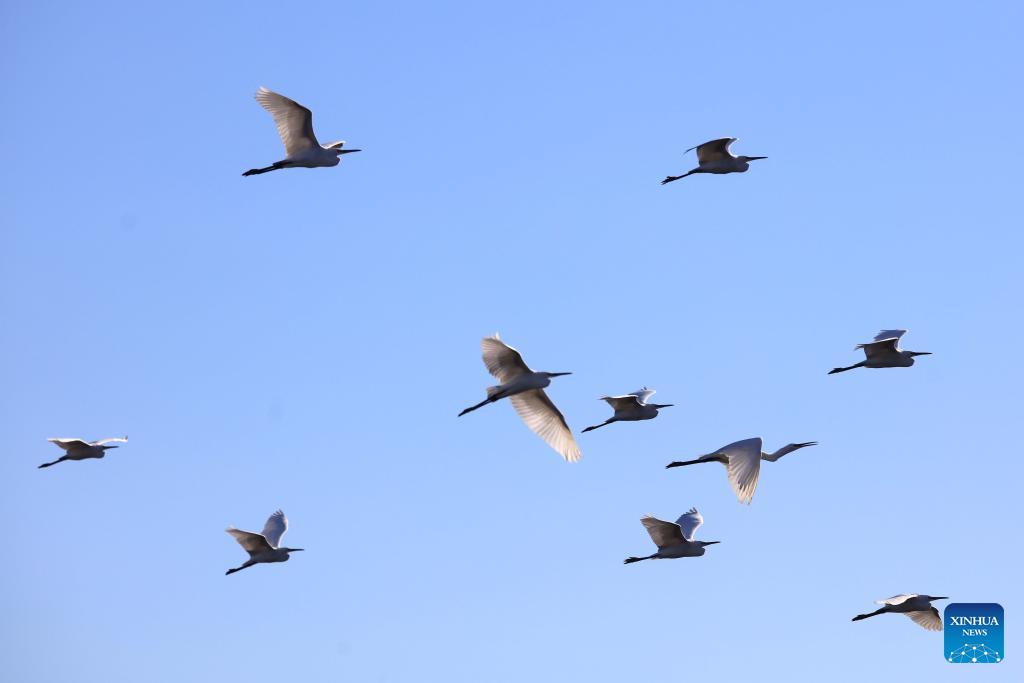
Birds fly over the Azraq Wetland Reserve in Azraq, Jordan on Oct. 13, 2025. Every year, millions of birds trace ancient aerial highways connecting Europe, Asia, and Africa. Jordan, located on one of these key bottlenecks, plays a crucial role in their twice-yearly migration. (Photo by Mohammad Abu Ghosh/Xinhua)
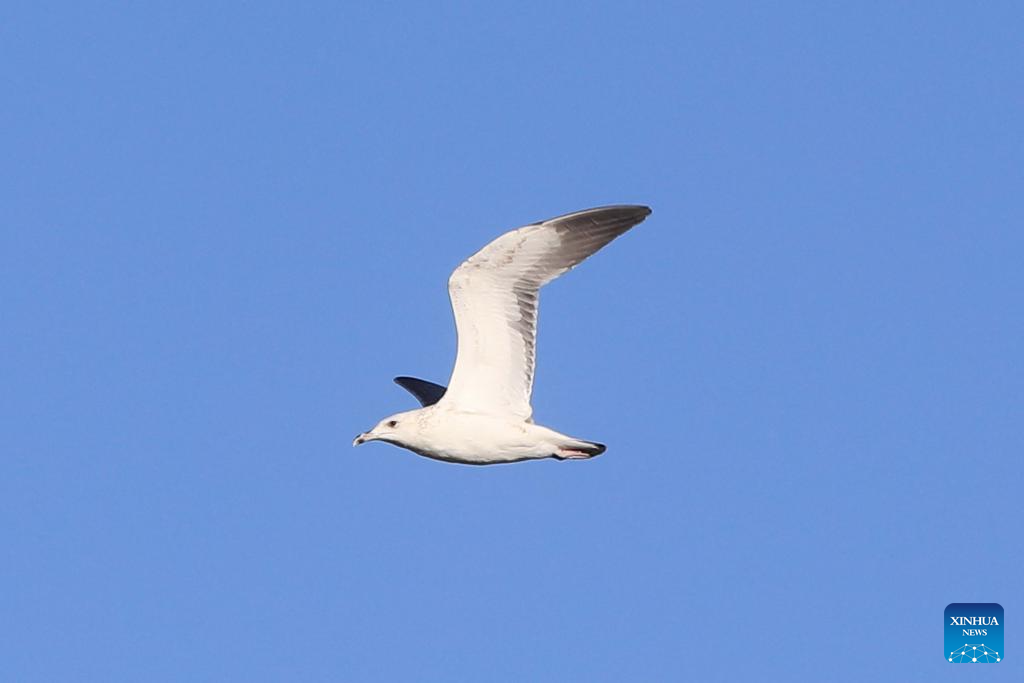
A bird flies over the Azraq Wetland Reserve in Azraq, Jordan on Oct. 13, 2025. Every year, millions of birds trace ancient aerial highways connecting Europe, Asia, and Africa. Jordan, located on one of these key bottlenecks, plays a crucial role in their twice-yearly migration. (Photo by Mohammad Abu Ghosh/Xinhua)
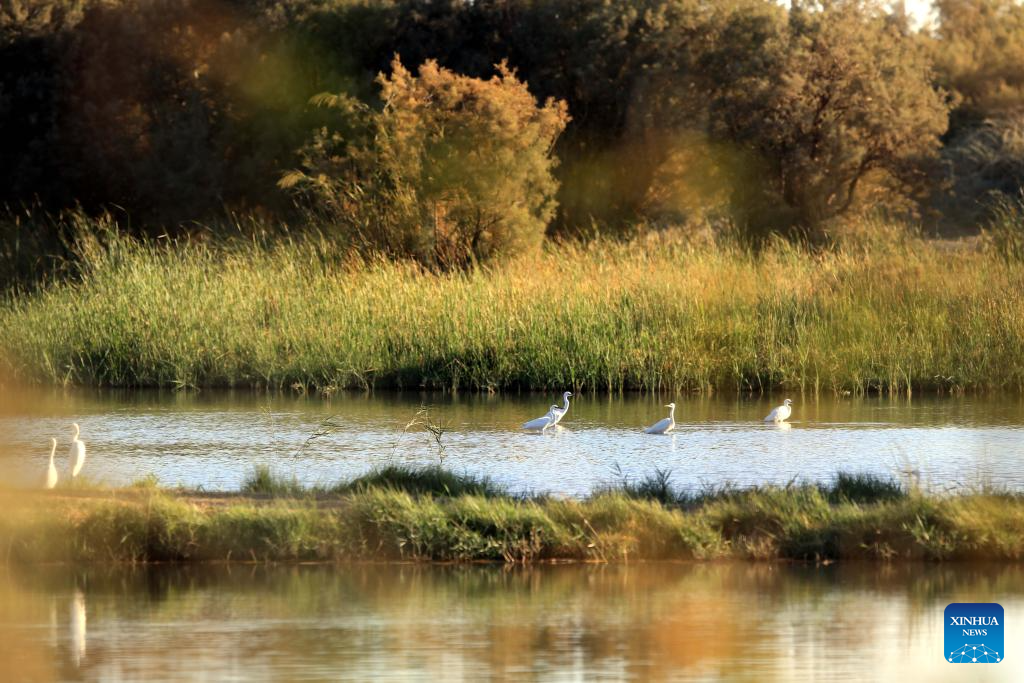
Birds rest in the Azraq Wetland Reserve in Azraq, Jordan on Oct. 13, 2025. Every year, millions of birds trace ancient aerial highways connecting Europe, Asia, and Africa. Jordan, located on one of these key bottlenecks, plays a crucial role in their twice-yearly migration. (Photo by Mohammad Abu Ghosh/Xinhua)
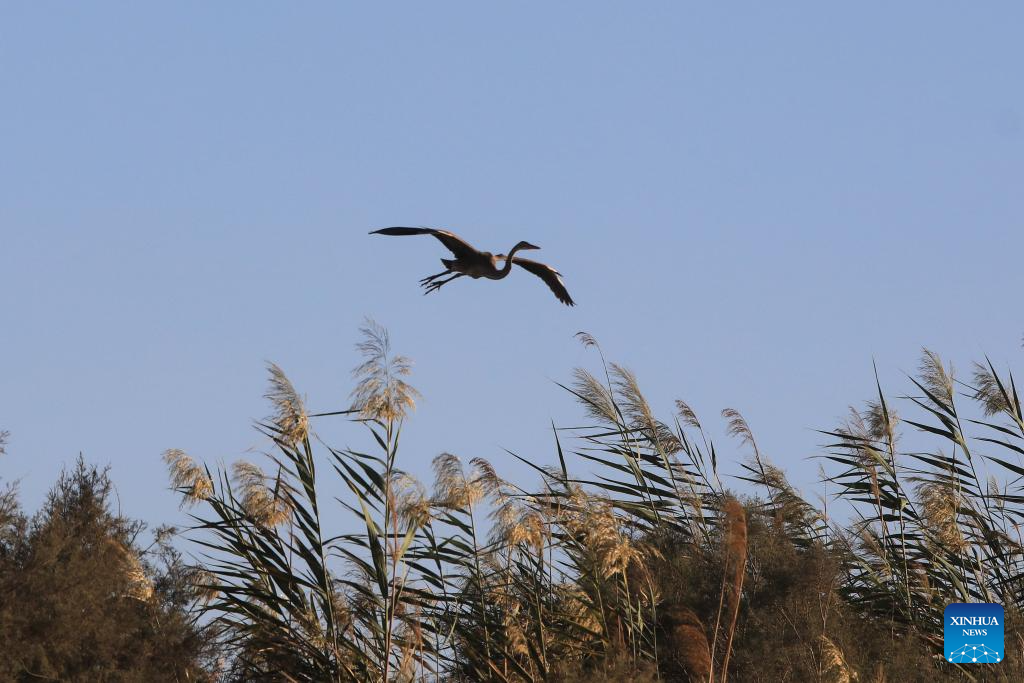
A bird flies over the Azraq Wetland Reserve in Azraq, Jordan on Oct. 13, 2025. Every year, millions of birds trace ancient aerial highways connecting Europe, Asia, and Africa. Jordan, located on one of these key bottlenecks, plays a crucial role in their twice-yearly migration. (Photo by Mohammad Abu Ghosh/Xinhua)
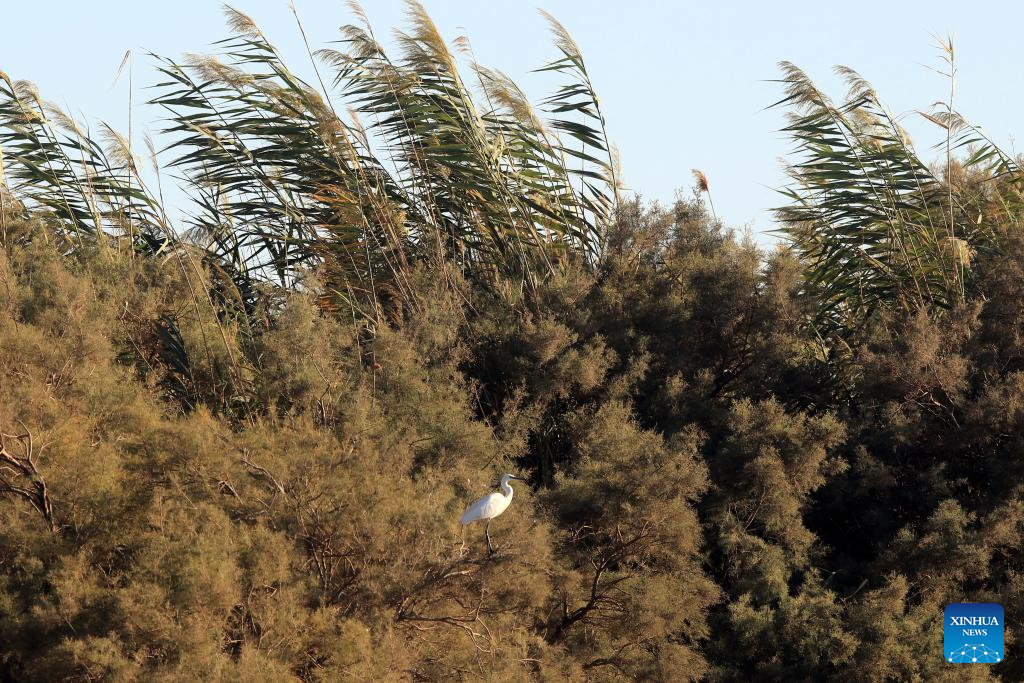
A bird rests in the Azraq Wetland Reserve in Azraq, Jordan on Oct. 13, 2025. Every year, millions of birds trace ancient aerial highways connecting Europe, Asia, and Africa. Jordan, located on one of these key bottlenecks, plays a crucial role in their twice-yearly migration. (Photo by Mohammad Abu Ghosh/Xinhua)
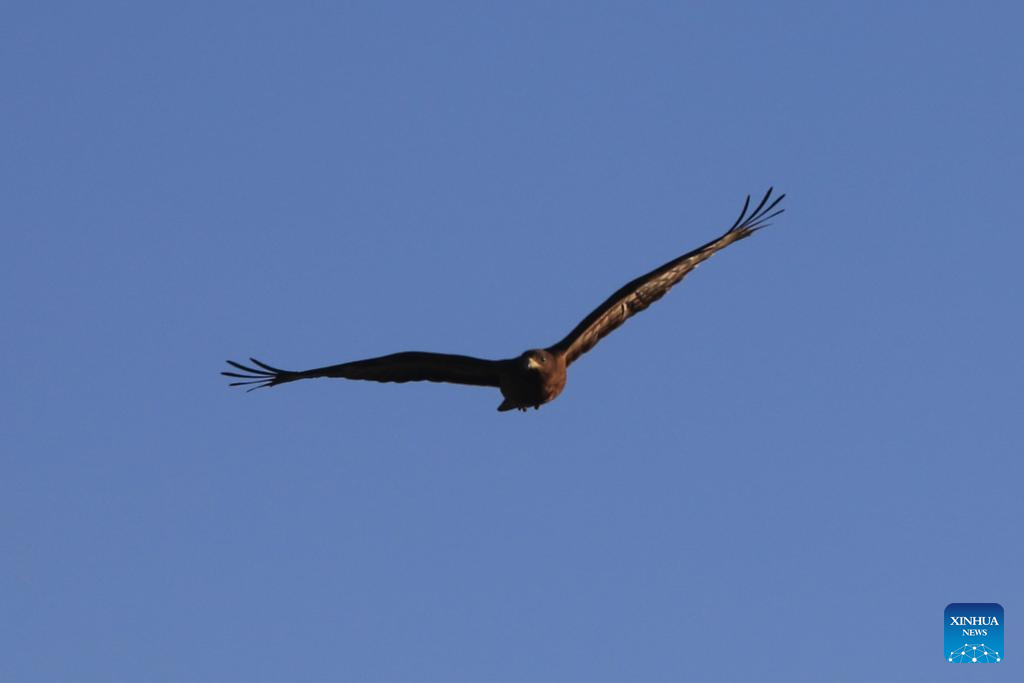
A bird flies over the Azraq Wetland Reserve in Azraq, Jordan on Oct. 13, 2025. Every year, millions of birds trace ancient aerial highways connecting Europe, Asia, and Africa. Jordan, located on one of these key bottlenecks, plays a crucial role in their twice-yearly migration. (Photo by Mohammad Abu Ghosh/Xinhua)



